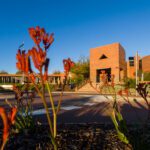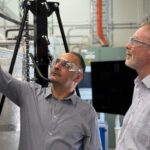Research from Curtin University could see bio-engineered liver tissue used instead of donor tissue for liver transplants.
The research aims to address the increasing burden of liver disease and shortage of donor organs occurring in all Western countries.
Dr Nina Tirnitz-Parker, research fellow at Curtin’s School of Biomedical Sciences, has spent the past eight years developing a method of bio-engineering liver cells, or hepatocytes, to replace tissue lost to disease or injury.
“More and more people die while on the waiting list for donor livers,” Dr Tirnitz-Parker said.
“So there’s an urgent need to develop new treatments for liver diseases and avoid the need of a liver transplant.”
Her research is based on the liver’s ability to restore itself with stem cell-like liver progenitor cells (LPCs) in chronic liver injury conditions such as alcoholic liver disease or hepatitis C virus infection.
LPCs contribute to liver regeneration by moving to injury sites where there is a loss of functional liver mass, and then differentiating into required hepatocytes and bile duct cells.
However, there are good and bad aspects to LPCs.
“LPCs interact with cells that drive scarring of the liver, which is known as liver fibrosis,” Dr Tirnitz-Parker said.
“We need to understand how we make these cells secrete the right signals that prevent fibrosis from occurring, which may in turn stop the onset of liver cirrhosis and liver cancer.”
Dr Tirnitz-Parker’s ongoing investigations include the role of LPCs in hepatitis C patients after liver transplantation, and the relationship of LPCs to cancer stem cells.
“Our research aims are twofold. Firstly, we want to develop a safe method of liver tissue engineering using LPCs and secondly, we would like to understand the role of LPCs in the carcinogenic pathway, including how to regulate their growth and prevent tumours developing,” Dr Tirnitz-Parker said.
Dr Tirnitz-Parker is working closely with Professor John Olynyk, a renowned clinical gastroenterologist at Fremantle Hospital and deputy director of the Western Australian Institute for Medical Research (WAIMR), and Professor George Yeoh, Head of WAIMR’s laboratory for Liver Disease and Carcinogenesis.
The research into the therapeutic potential of LPCs is progressing from the WAIMR team’s discovery that a protein known as TWEAK stimulates the growth of LPCs.
In addition to Professor Olynyk, who is also an Adjunct Professor within the Curtin Health Innovation Research Institute (CHIRI), the research collaboration includes researchers from the University of Western Australia, the Queensland Institute of Medical Research, the University of Sydney and Loma Linda University, in California.
As part of this work Dr Tirnitz-Parker, Professor Olynyk and Associate Professor Grant Ramm from the Queensland Institute for Medical Research were also recently awarded $600,000 in nationally competitive research funding from the National Health and Medical Research Council Australia to investigate “The Role Of Hepatic Stellate Cell And Liver Progenitor Cell Interactions In The Regulation Of Wound Healing And Liver Regeneration”
Contact:
Kristy Jones, Public Relations, Curtin University
Tel: 08 9266 9085, Mobile: 0402 517 300, Email: k.jones@curtin.edu.au
Web: http://curtin.edu.au


